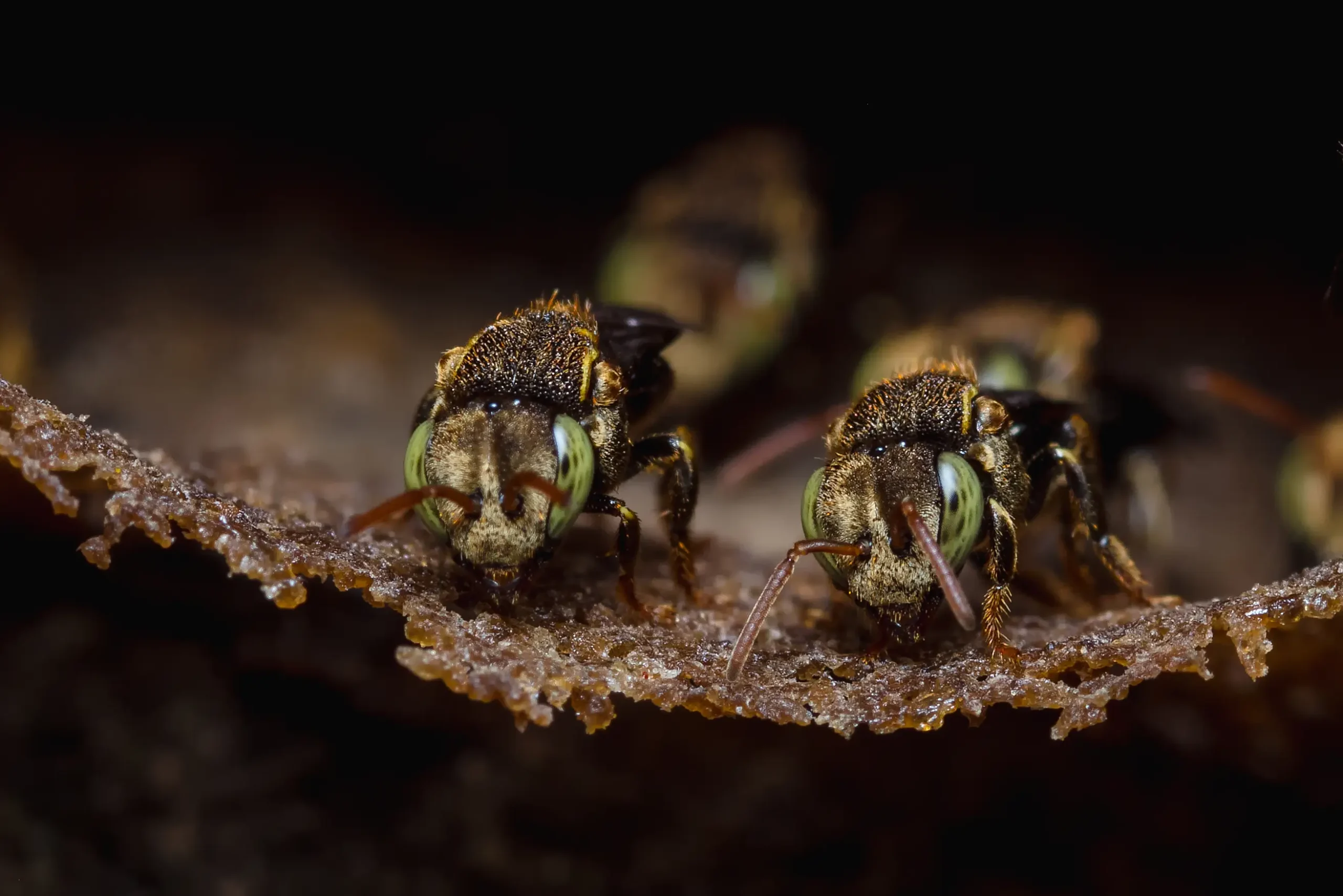The vanilla orchid flowers bloom for a very short period of time, and that’s why farmers must step in at just the right moment, often within a few hours of the flower opening. Each flower remains open for just 8 hours, after which, if not pollinated, it wilts, dies, and drops to the ground.
Its delicate structure makes pollination difficult, requiring a particular interaction between pollinator and flower. The Melipona bee, through its tiny size and behaviour, was the only insect capable of carrying out this task in the wild. It is thanks to this bee that vanilla spread from its native forests into your kitchen.
Modern vanilla farming now relies on hand-pollination, a painstaking technique performed by skilled growers. The process requires growers to manually move pollen from the flower’s male structure to its female counterpart, replicating the natural work of the Melipona bee. Despite this human intervention, the bond between orchid and bee remains an essential part of vanilla’s heritage.
The Melipona belongs to a broader family of stingless bees, also known as meliponines, which are found across the tropics. They appear in remarkable diversity: some are golden, others deep black, and some striped in warm tones of cinnamon and yellow. Their eyes may range from black to slate grey or even bluish-green. Their sizes vary from lentil-small to nearly the size of a grape.
This diversity translates into honeys of extraordinary variation. In the Peruvian Amazon alone, there are more than 175 different stingless bee species, each producing honey with distinct textures and flavours shaped by the plants they pollinate. Such honeys are increasingly sought not only for their culinary interest but also for their medicinal properties.
Today, Melipona bees are endangered. Their forest habitats are shrinking due to deforestation, modern agriculture, pesticides and the spread of non-native honeybees create further pressure on already small populations. Traditional beekeeping, once common among Maya households, is fading as younger generations leave rural life behind.
Similar challenges are been faced in Peru and Brazil, where scientists and communities are reviving meliponiculture by keeping stingless bees in wooden hive boxes. This allows for honey harvesting without destroying wild colonies and helps families generate sustainable income.
Every lost hive represents more than an ecological loss. It is also a cultural loss, as centuries of knowledge about Melipona honey and its uses risk being forgotten. For chefs, the decline of this bee underlines how fragile the chain of flavour can be. Ingredients of extraordinary quality often depend on the smallest and most vulnerable creatures.
For generations, Indigenous communities throughout the Americas have valued stingless bee honey as a powerful healing remedy. Frequently referred to as a “miracle liquid,” it has been applied to treat respiratory illnesses, wounds, burns, digestive ailments, joint pain and much more. Contemporary studies increasingly confirm these traditional practices, pointing to the honey’s notable antimicrobial, anti-inflammatory, and antifungal properties. In tropical climates, stingless bees naturally enrich their honey with chemicals that prevent microbial growth, allowing it to last even in the heat and humidity.

Melipona honey is one of the rarest honeys in the world. A single hive produces more or less than a litre each year, compared to the dozens produced by European honeybees. The result is a liquid honey with a unique flavour profile: thinner in texture, less sweet, yet rich in floral and citrus notes. It carries a tangy brightness and layers of complexity that chefs describe as both delicate and powerful. This unique flavour profile can inspire new dishes and flavour combinations, making it a valuable ingredient for culinary professionals.
For the Maya, this honey was medicine as much as nourishment. It was applied to the eyes, used in healing rituals, and served as an offering to the gods. Today, chefs who have the opportunity to work with it discover a flavour that bridges sweetness and acidity in a way that few other ingredients can achieve.
The story of the Melipona bee enriches the narrative of Vanilla itself. Both are products of the same environment, both shaped by the same culture. Working with Vanilla Maya is to embrace not only the pod, but also the history of the pollinator that first gave it life.
The flavour and aromatic profile of our vanilla is influenced by the species, production location, curing process, and storage conditions. This natural setting infuses Vanilla Maya with the terroir, just as fine wine or speciality coffee reflects the soil and soul of its region.
We will inform you when the product arrives in stock. Please leave your valid email address below.